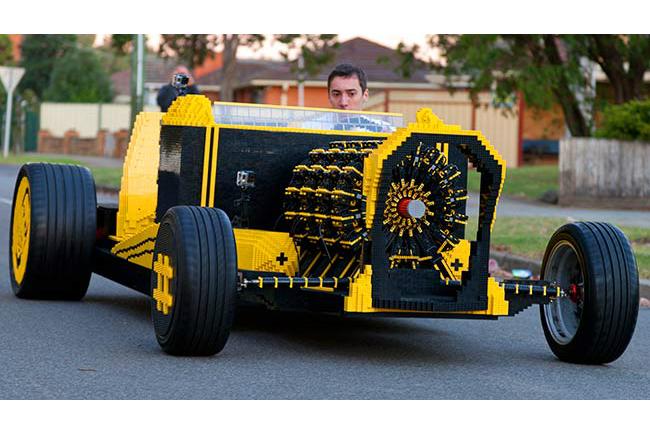
As a kid, you likely played about with Lego at some point, and possibly tried your hand at building a car, albeit a small one consisting of just a few pieces.
As adults, friends Steve Sammartino and Raul Oaida took on an altogether more ambitious Lego-inspired car-based project, building a drivable hot rod with 500,000 of the plastic bricks. Besides a few parts such as the tires, wheels, and gauges, the entire machine is made of Lego.
The stunning creation is powered by four orbital engines with 256 pistons, and runs on compressed air, which pushes it to a not-typically-hot-rod top speed of 17 mph. Any faster and the whole thing could fall apart, its makers said.

Melbourne-based entrepreneur Sammartino said he tweeted a request for funding the Super Awesome Micro Project last year. The response was excellent, with 40 car/Lego enthusiasts each throwing in from $500 to $1000 to help the offbeat idea become a reality.
Sammartino and Romanian tech expert Oaida went for a hot rod design simply on the basis that “hot rods are cool.” Oaida built the vehicle in his home country before shipping it over to Australia. While there were undoubtedly a few nervous moments as they opened the shipping container in Melbourne, they were relieved to see the car hadn’t entirely disintegrated during its 9,000-mile journey, with only a few bricks in need of reattachment.
It’s not clear what’s in store for their Lego automobile, though Sammartino said they’re open to offers to display it at car shows.
The pair first teamed up last year for another project that put a Lego replica of the Space Shuttle into the upper atmosphere. The flight became a hit on YouTube and inspired the duo to continue their collaboration, leading to this remarkable life-size Lego car. Watch it in action below….
[via CarsGuide, The Verge] [Images: Josh Rowe]


